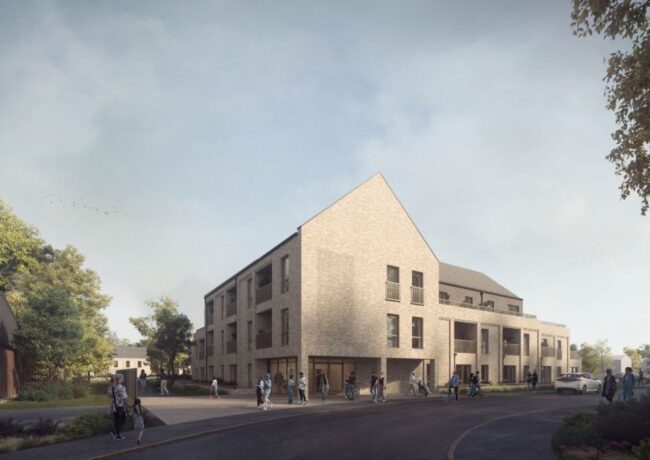Boylan: GM must triple housing supply
Greater Manchester councils are proposing using land previously reserved for commercial development for residential as part of a bold package of interventions to tackle a dire shortage of new housing.
The ten councils that make up the Association of Greater Manchester Authorities will begin an audit of employment sites to identify suitable plots in healthy housing markets to help ease the shortage of new homes.
The proposals are explained in a report by Eamonn Boylan, chief executive of Stockport Council and lead chief executive for planning and housing in AGMA. The report will be discussed at AGMA's planning and housing commission meeting tomorrow.
Boylan writes that new housing completions in Greater Manchester are currently running at 3,000 a year compared to a target of 9,200. Without significant intervention from local authorities the target will never be reached, Boylan asserts.
He wrote: "This picture, common across the country, is a product of the dramatic tightening of lending to households and to developers, substantially undermining ability of housebuilders to raise development finance and of households to secure affordable mortgage finance."
His 'portfolio of interventions' includes using government funds from familiar pots such as the Homes & Communities' Agency's Affordable Homes Programme, local authority mortgages and house-building by the Greater Manchester Pension Fund, currently being piloted in Manchester.
Furthermore, developers should be helped to de-risk new housing applications by making 'Greater Manchester a more welcoming environment for housing development. These could include clear, simplified and/or consistent GM approaches to issues such as Community Infrastructure Levy, or section 106 planning obligations, or at a more basic level the processes and information requirements around planning applications and building control.'
Boylan said AGMA authorities should review supply in the more robust housing markets where investors would be confident of sales.
He said: "Our evidence tells us that these are the types of areas where there is less risk to investors and where new housing development is likely to be focused in the short to medium term.
"Our objective is to maximise the land available in these areas to expand the offer in our most attractive locations in order to stimulate housing development in the short to medium term. At the same time we need to ensure that development in viable housing market areas allows for investment in GM's more challenging housing market areas (regeneration priorities) in the medium term, thereby supporting AGMA's long-term ambitions to accommodate growth within GM. This will necessitate a review of all sources of supply in these locations, including employment sites as well as the existing identified housing supply, and will help us to determine whether longer-term a greenbelt review is likely to be necessary."
The review of short and medium-term land supply should ask the following questions, Boylan wrote:
- Where are the existing viable housing market areas?
- What proportion of the current supply is considered to be in viable housing market areas?
- Approximately how many units can be delivered on land within the existing supply in viable housing market areas and are they suited to current developer needs in terms of size / condition?
- If this work establishes that there is a shortage of available land in viable housing market areas then we need to establish whether there are additional sources of supply. This may include employment sites / discounted sites (either housing or employment) / greenfield land
- Approximately how many units (applying a standard density) could be delivered on each additional source of supply and are sites suited to current developer needs in terms of size / condition?
The full report is available on the AGMA website





Broadly this is to be welcomed, there has long been a need to make the allocation of land for housing supply more flexible as long as it doesn’t encourage too much sprawl and undermine regeneration. But where public funds are at stake AGMA should be wary of introducing measures that subsidise the failing business model of large volume house builders. Any public subsidy should be used to encourage new market entrants particularly smaller players, self build schemes, community land trusts and large construction companies to stimulate competition and drive up standards. Where any public land is being released it should come with strict criteria in terms of reduced profits margins, build out rates and space standards. We need to avoid falling in the trap that central government have by throwing subsidy at a dysfunctional industry without demanding quid pro quo.
By QPQ